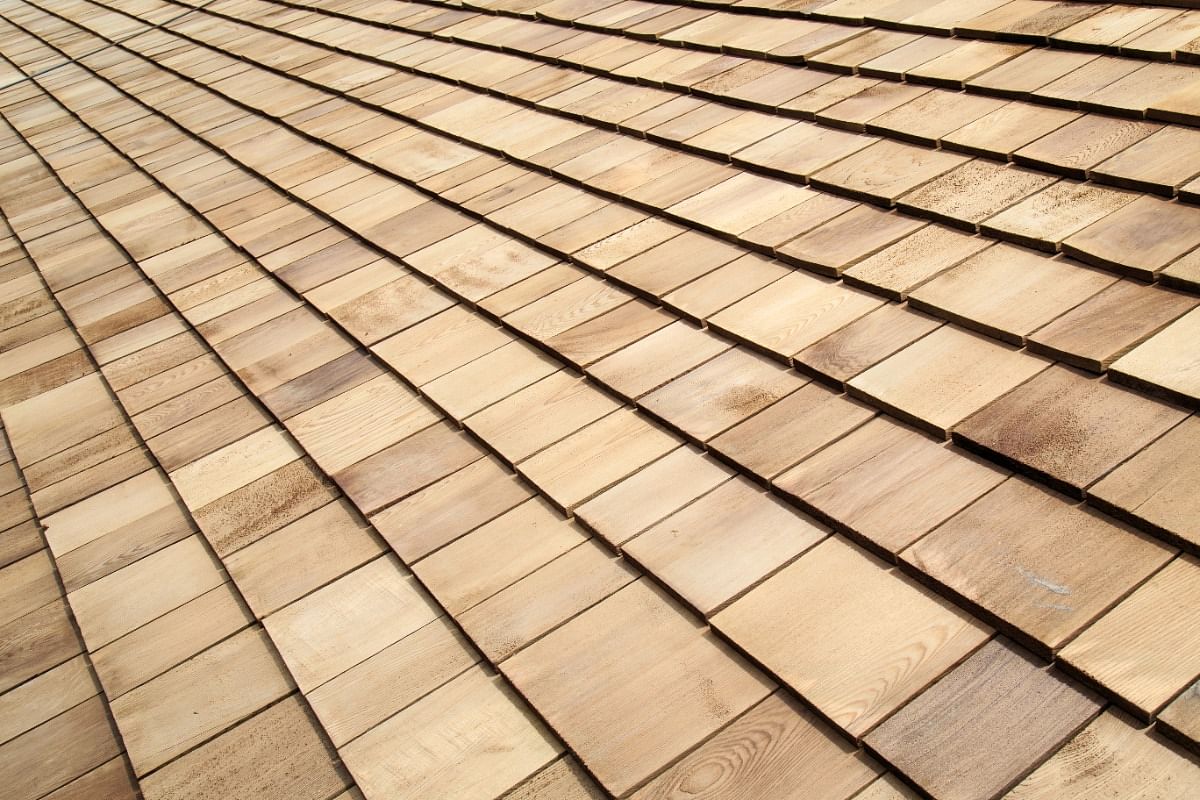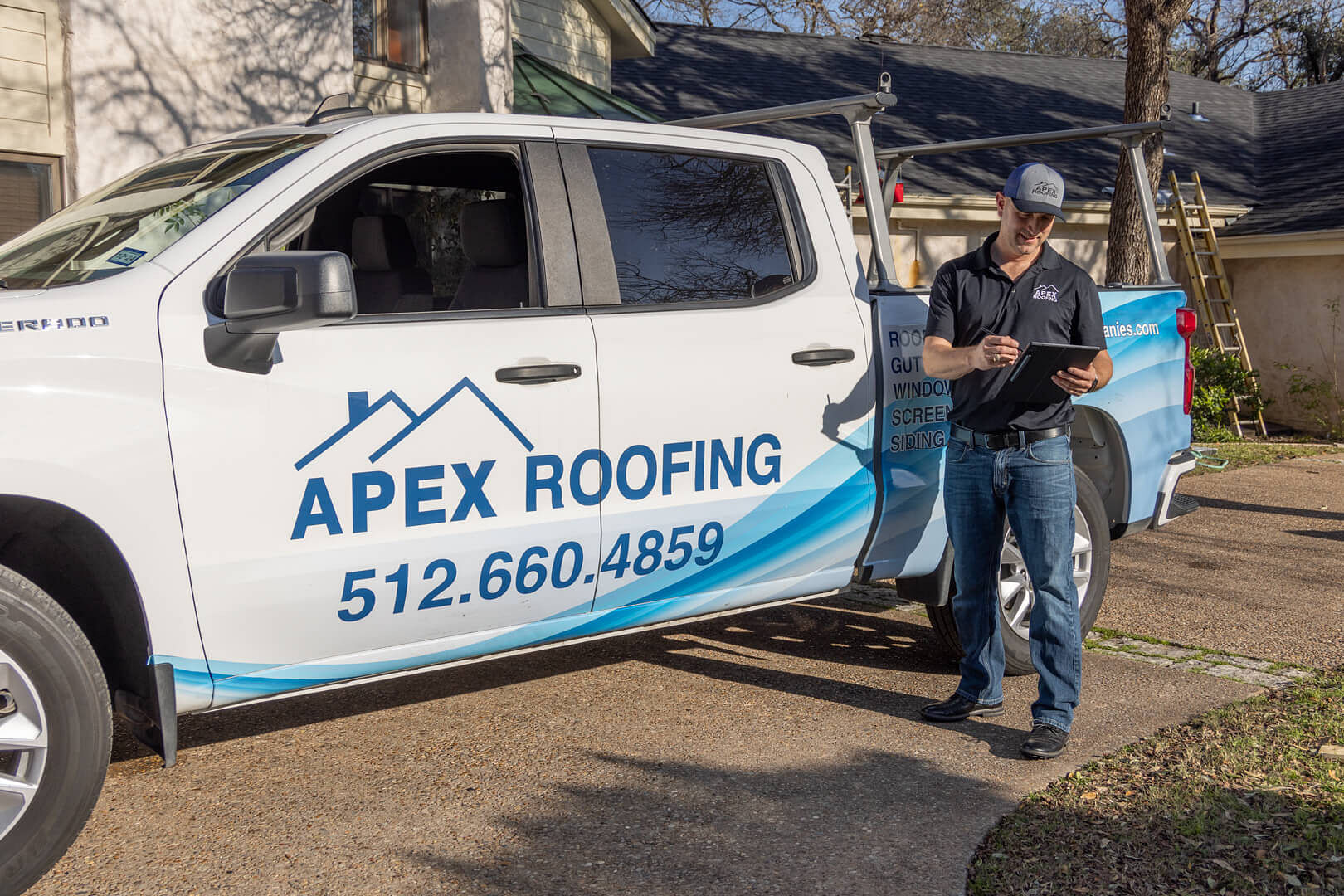Free Roof Quote – Call us today: 512-812-8454
How Long Does a Wood Shake Roof Last?
Defining Wood Shake Roofing Systems
Wood shakes are roofing materials that have been used for centuries, known for their distinctive hand-split look which gives them a more rustic appearance compared to wood shingles. While both are made from wood, shakes are typically thicker and rougher, with a split face that reveals the natural texture of the wood, and a sawn back. Wood shingles, on the other hand, are machine-cut, leading to a more uniform appearance.
Types of Wood Used
The most common types of wood used for shakes include cedar and redwood, both of which are highly regarded for their natural resistance to rot, insects, and weather damage. Cedar, especially, is favored for its durability, aesthetic appeal, and natural preservatives that make it an excellent choice for roofing. Redwood, while less common, offers similar benefits and adds a unique visual appeal to roofs.
Historical and Modern Appeal
Wood shake roofs have a long history, dating back to when settlers in America would use locally sourced wood to protect their homes. This historical significance adds to the charm of wood shake roofs, making them a popular choice for those looking to add character and tradition to their modern homes. Despite advances in roofing technology and the emergence of synthetic materials, wood shake roofs remain a sought-after option for homeowners who value the timeless beauty and natural insulation properties of wood.
The Lifespan of Wood Shake Roofs
The lifespan of a wood shake roof is a crucial consideration for homeowners, with most wood shake roofs generally lasting between 20 to 40 years. However, it's important to note that this range can vary significantly based on several factors, including the type of wood used, the quality of the shakes, installation practices, and the local climate.
Type and Quality of Wood
The longevity of a wood shake roof largely depends on the type and quality of wood used. Cedar and redwood are among the most durable and resistant to decay, contributing to longer lifespans. Higher quality shakes, particularly those treated with preservatives and fire retardants, can also extend the life of the roof.
Comparison with Other Roofing Materials
When compared to other roofing materials, long-lasting wood shake roofing offers a unique blend of aesthetic appeal and durability. Asphalt shingles, for example, may last 15 to 30 years, while metal roofing can last 40 to 70 years. However, the natural look and insulation properties of wood shakes often make them a preferred choice despite the potential for a shorter lifespan than some synthetic options.
4 Key Factors Influencing Wood Shake Roofing Longevity
Several key factors influence the lifespan of wood shake roofs. Understanding these can help homeowners make informed decisions about their roofing materials and maintenance practices.
1) Quality of Materials: The selection of high-quality, durable wood shakes is fundamental. Wood treated with moisture-resistant coatings and fire retardants can significantly enhance longevity and performance, especially in areas prone to wet conditions or wildfires
2) Installation and Design: Proper installation by experienced professionals (like APEX Roofing) is critical to maximizing a wood shake roof's lifespan. Design elements, such as adequate roof slope and effective ventilation, also play crucial roles. These factors ensure proper water drainage and reduce moisture buildup, preventing rot and extending the roof's life.
3) Climate and Environment: The local climate has a profound impact on how long wood shake roofs last. In humid climates, wood shakes are more susceptible to moisture-related decay, while in dry climates, they may be more prone to cracking and splitting. Sun exposure can also fade and weaken wood over time, whereas areas with frequent storms or high winds can cause physical damage.
4) Maintenance and Care: Regular maintenance is perhaps the most controllable factor that influences the lifespan of a wood shake roof. Homeowners should conduct annual inspections to check for and repair damage, treat wood shakes to prevent moss and algae growth, and clean gutters and downspouts to ensure proper water drainage. Neglecting these practices can lead to premature deterioration of the roof.
Advantages and Disadvantages of Wood Shake Roofs
Understanding both the advantages and disadvantages of wood shake roofs can help homeowners make a well-informed decision about whether this roofing material is the right choice for their homes.
Advantages
- Insulation Properties: Wood is a natural insulator, helping to keep homes warmer in the winter and cooler in the summer. This can lead to energy savings and increased comfort.
- Eco-Friendly: Being a natural material, wood shakes are environmentally friendly, especially if sourced from sustainably managed forests. They are also biodegradable at the end of their life, reducing environmental impact.
Disadvantages
- Cost: The initial cost of a wood shake roof can be higher than other materials, both in terms of the materials themselves and the installation. This is due to the need for skilled labor and the quality of the wood used.
- Susceptibility to Elements: Wood shakes are vulnerable to fire, rot, insects, and weather damage if not properly maintained. This can lead to a need for more frequent repairs or replacement compared to some synthetic roofing materials.
Maximizing the Lifespan of Your Wood Shake Roof
To ensure your wood shake roof reaches its maximum potential lifespan, consider the following maintenance and care practices:
1) Regular Inspections: Conduct at least annual inspections of your roof to identify and repair any issues before they lead to major damage. Look for signs of wear, such as split or missing shakes, and check for moss, algae, or fungus growth.
2) Proper Cleaning: Keep your roof clean from debris, such as leaves and branches, which can retain moisture and lead to rot. Soft washing can be used to remove growths like moss and algae without damaging the wood.
3) Treatment and Protection: Apply treatments to protect against moisture, UV damage, and fire. Reapplying protective coatings and sealants as recommended by manufacturers can extend the life of the shakes.
4) Pest Control: Be proactive in controlling pests such as termites and carpenter ants, which can cause significant damage to wood roofing.
5) Professional Maintenance: Engage with roofing professionals nearby like APEX for maintenance and repair tasks that go beyond basic care. Expertise is crucial for ensuring that repairs are done correctly and for addressing complex issues.
Have Your Wood Shake Roofing System Installed by the Pros
If you're considering the timeless beauty and natural durability of a wood shake roof for your home, choosing the right installation partner is crucial. APEX Roofing offers unparalleled expertise in wood shake roof installation and maintenance, ensuring that your roof not only looks exceptional but also stands the test of time. Call or email us today to start the process of beautifying your home and investing in quality protection for you and your loved ones.

